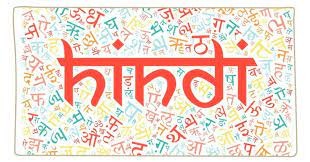
Instead of being overwhelmed, why not try this?
- Lesson 1: Context is everything in language learning. One of the things with language learning at the beginning is that it’s simple. That’s, of course, where you need to begin if you want to speak. The meaty stuff comes later. My first exposure to Hindi was very advanced: Bollywood movies. The downside was that I could understand hardly any of it, but the upside was that it was meaningful. I wanted to understand these movies to follow the storylines. And those stories gave context to the language, so I could follow what was happening without understanding every word.
- Lesson 2: Google Translate is your friend. Google Translate works pretty well but still makes some mistakes that you just have to look past. I knew I could rely on it as a tool, but that I couldn’t assume it’s always 100% correct. A great benefit is that you can also listen to words to learn pronunciation.
- Lesson 3: Keep note of all the words you’ve learned or want to learn. From day one of learning Hindi, I took time to keep a digital record of the words I wanted to learn. I did this in a Google spreadsheet.
- Lesson 4: Drop the “the”. There is no word for “the” or “a” in Hindi. In other words, there are no definite or indefinite articles. It is common, however, to use Ek, which means “one” in front of a noun. This makes Ek Kitab akin to “the book” or “a book”.
- Lesson 5: Make a special effort to learn the “glue words” first. I started by learning “the little words”. These “glue words” occur so frequently, it’s best to learn them straight off the bat. Three important glue words in Hindi are aur (and), lekin (but) and ya (or). The sooner you conquer them, the better.
- Lesson 6: Get ready for formalities. Hindi is a formal language and there are three levels of formality. “You” is aap, tum, and tu, from most formal to least. Tu is another Sanskrit cognate that speakers of romance languages will recognize!
- Lesson 7: Get ready to show respect. The post-fix ji is a formality token added to the end of names and responses – like, yes and no. So, in a formal situation, haan (yes) and nahin (no) become haan-ji and nahin-ji, respectively.
- Lesson 8: Put verbs last. Hindi is an SOV language (subject-object-verb) while English is an SVO language. This means basic word order will be different from English – get used to putting your verbs last.
- Lesson 9: Gender matters. When it comes to learning nouns in Hindi, you’ll have to remember one of two forms. Hindi has male and female nouns.
- Lesson 10: Adjectives. Adjectives come before the noun, like in English. Some change according to the gender of the noun they’re attached to, as well as for singular and plural. Others stay the same.
- Lesson 11: Infinitive verbs. One of the first patterns you learn is that infinitive verbs end in ‘na’ – as in karna meaning “to do”.



